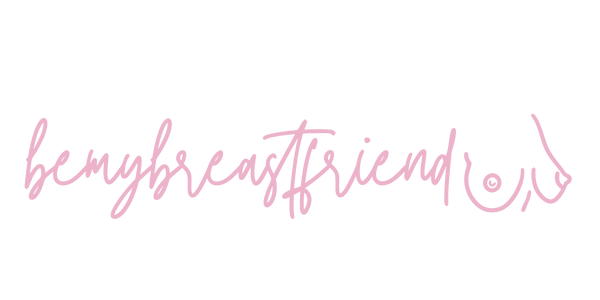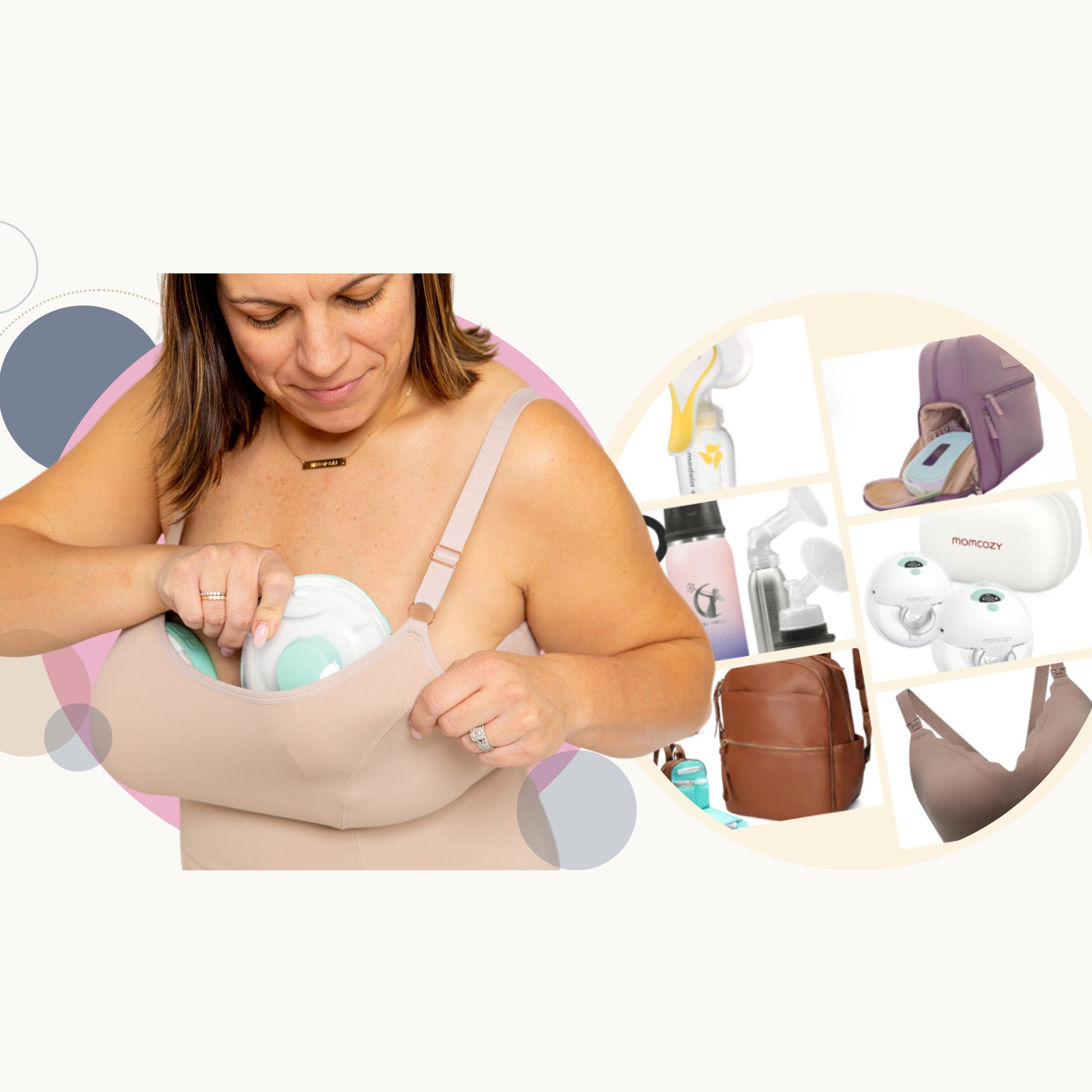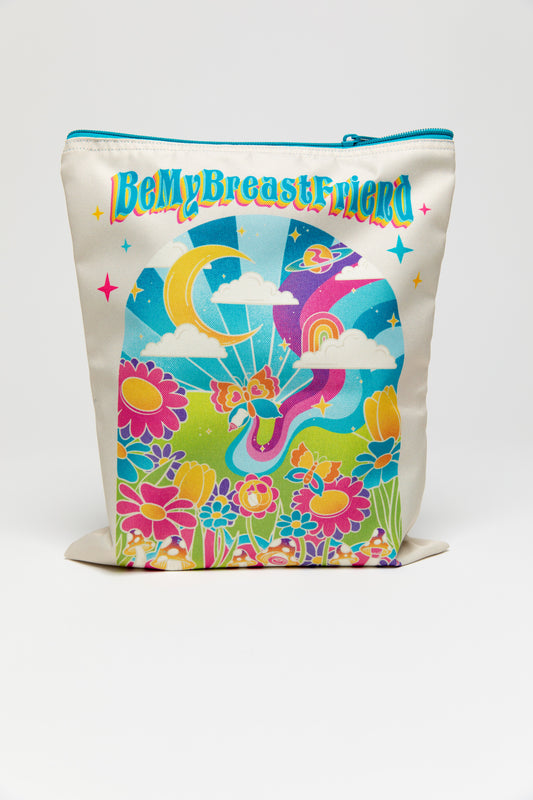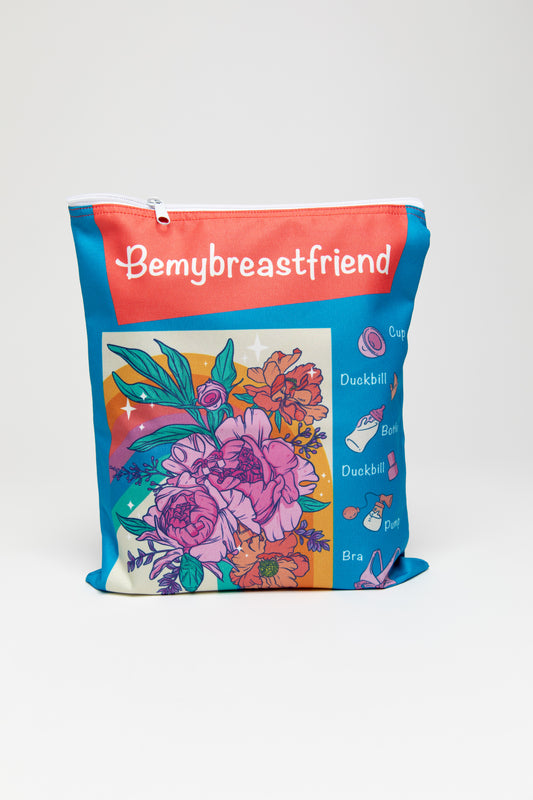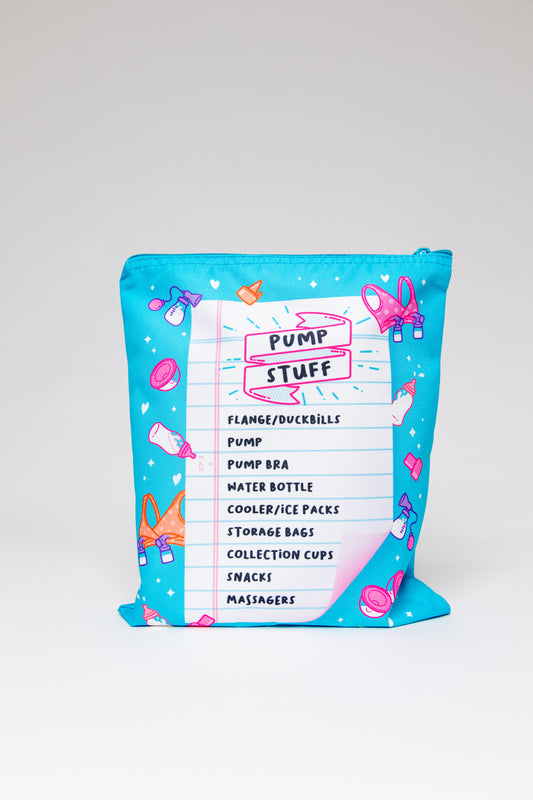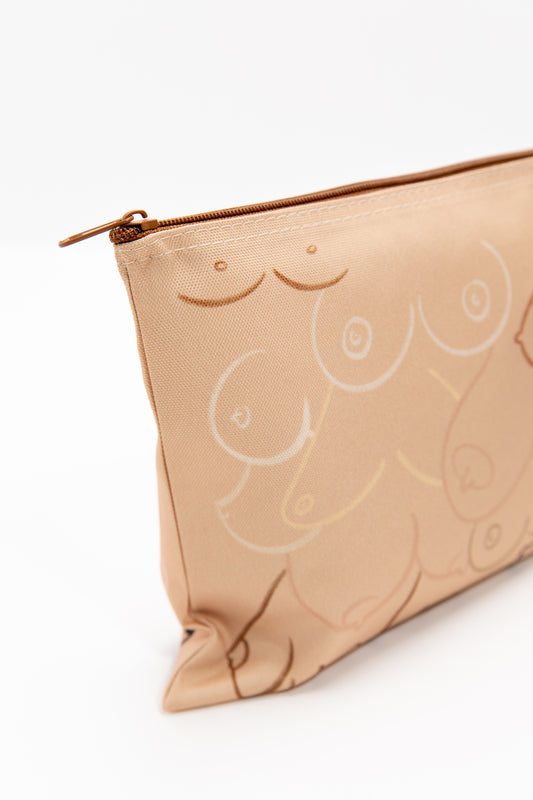
I will be the first to tell you pumping isn’t always a walk in the park. Yes, there are so many things I love about it. But, I’d be lying if I said everything is peachy with pumping all day, every day. Whether you’re an exclusive pumper, doing the occasional bottle for a sitter, or embracing combo-feeding as you've returned to the office, nipple pain is one of those things that can make pumping challenging. And while some discomfort is normal when you first start, full-on pain, cracked nipples, or lasting/permanent nipple damage are not okay.
Managing nipple pain while pumping is all about recognizing the issue early and making adjustments before things get worse.
If your toes are curling, your nipples are bleeding, or your pumping sessions feel like a punishment, it’s time to troubleshoot. The good news? There are solutions.
Why Does Nipple Pain Happen While Pumping? What Can I do to Prevent it?
Some nipple soreness in the early days is unavoidable—your breasts are adjusting to a machine doing what a baby’s mouth usually does. And, if you know anyone who has nursed a baby (or perhaps you are also nursing), nipple pain comes with the territory of nursing. But I know of many moms who have switched to exclusively pumping because of the nipple pain alone... this should also be addressed BTW. So, why are we talking about nipple pain during pumping? Unfortunately, it can still happen for a variety of reasons. You may experience discomfort as your body adjusts to the new sensation of your pump of choice, but prolonged, painful nipples are usually a sign that something is off.
Here’s why nipple pain might be happening and how to prevent it:
1. Wrong flange size
If your flange is too big or too small, it can wreak havoc on your nipple and breast tissue. Check out my flange sizing guide for a step-by-step process to find the right fit.
Not to mention, incorrect flange size can also result in insufficient milk removal, which will eventually affect your milk supply. Your goal is to have only your nipple move in and out of the flange with minimal areola involved. However, you don’t want the sides of your nipple to be touching the tunnel of your flange. In other words, the flange should fit snugly, without pulling in too much areola or causing friction. My flange sizing chit-chat video has all the details on getting it right.
2. Elastic tissue
If you’re like me and your nipples stretch far into the tunnel, perhaps even touching the end of the tunnel, you might have elastic nipple tissue. Pumping without proper concern for this type of breast tissue can have serious consequences, including discomfort, constriction on the milk ducts causing ducts to clog, dips in milk production, and even nipple trauma. I delve into specifics about elastic tissue solutions here.
3. Incorrect pumping technique
Your milk ejection reflex needs time to kick in with mild stimulation before switching to the expression mode and possibly increasing the suction to mimic baby’s long swallows. Start low and go slow! Most pumps have two modes: one for massage to encourage a letdown and the other for expression.
4. High suction settings
More suction does NOT equal more breast milk. If your pump settings are too high, you’ll be uncomfortable. I suggest starting at the lowest possible setting and increasing gradually until you are sufficiently removing milk. Rule of thumb, continue to increase suction, once you get to an uncomfortable level back it down by one level.
5. Friction & dryness
If you are prone to dry skin, or just have sensitive skin, you may notice that pumping is irritating to your nipples. You’re not doing anything incorrectly, your body just needs time to get used to the sucking motions. Check to make sure that you are washing your pump parts with unscented soap if needed. For some moms, pumping without lubrication can lead to painful friction and chafing. Check out my guide on when to use pumping lubricant. It’s not for everyone, but it’s worth looking into!

Silicone vs. plastic breast shields – Some moms find that silicone flange inserts or breast cushions are gentler on their nipples than the hard plastic flanges that most pumps come with. Experiment to see what works best. Here’s a blog on flange inserts vs. breast cushions you may want to read!
How to Treat Nipple Pain
Maybe you’ve done your best to follow tips and tricks for managing nipple pain while pumping, but you’re still experiencing nipple soreness or even trauma. Here’s how to treat the pain and make sure your breasts are up for a more pleasant breastfeeding journey!
Mild Nipple Pain/Discomfort
In the early days, breastfeeding is typically uncomfortable. If you're nursing, baby’s latch is the most important thing to watch while feeding. If you’re pumping, follow my tips above. But even with the best form and parts, you will most likely experience painful nipples in some capacity. Here are some ways to care for your nipples between sessions until they adjust to this new “way of life."
- Apply nipple creams like this one, coconut oil, or olive oil between sessions to reduce irritation. If you are nursing, make sure that the cream you use is safe for baby to ingest. Careful about creams containing lanolin, as this can make things worse if you are sensitive or allergic to wool.
- Cold compresses vs. warm compresses: Cold compresses are your best friend when dealing with swelling or general nipple soreness. They help reduce inflammation and numb the area like they do for any wound—perfect for when your nipples are straight-up angry, soothing clogged milk ducts, and easing discomfort from breast engorgement. Warm compresses, on the other hand, are great for encouraging milk flow. Just don’t overdo the heat—it should feel soothing, not like you’re roasting yourself. Try warm compresses before pumping to improve circulation. These Breast Therapy Packs can be used hot or cold for soothing sore nipples and fit easily in your bra for hands free healing.
More Serious Nipple Trauma
So maybe you’re reading these prevention tips a bit too late…Your nipples are raw, cracked, bleeding, scabbed, or all of the above. You don’t want this to be the end of your breastfeeding journey, but you truly don’t know if you can get past the pain. I’ve been there. I can’t tell you it’s going to be pain-free to pump when you already have nipple trauma. However, if all of your techniques are correct and you are finding the root of the issue, pumping should be bearable (not comfortable yet, but it shouldn’t feel like your nipples are being torn off). Then, after your nipples have healed and your body has adjusted to regularly pumping, everything should be comfortable and pain-free. Here are some ways to promote healing if you’ve already experienced nipple trauma:
-
Use Silverette cups – These silver nursing cups help heal cracked nipples and reduce inflammation. They don’t look the cutest for going out in public (hello headlights), but they are awesome for around the house. PS, they'e not intended to be used with other creams or remedies. Express a little of your own breastmilk in the cup and pop it on!
-
Breast shells between sessions – Try using the Elvie Catch or another type of breast shell to prevent anything from rubbing on your nipples between pumps. I like the Elvie Catch because it keeps harsh fabrics away and lets your skin breathe but doesn’t look like you’re wearing anything extra. Plus, it collects milk in those early days when leaking is pretty constant. Sometimes disposable pads or even reusable ones can be irritating on nipples new to nursing or pumping. Once your nipples grow more accustomed to things, you can switch to disposable pads or reusable ones.
-
Check for nipple damage – See my Instagram highlight for signs of damage and when to seek help from a healthcare professional. Reach out to your OB or a certified lactation consultant if you need support.
- Address possible infections and more – Nipple thrush or bacterial infections in open wounds can obviously cause a significant amount of pain. If your nipples are discolored after a session, you may be dealing with nipple vasospasms. If this is the case for you, consider applying heat to your sessions, before and after. When in doubt check with a healthcare provider.
Additional Resources
Many mamas prefer pumping in the midst of dealing with cracked nipple pain, as opposed to nursing, at least while they figure out the root cause and let their tender nipples heal. But they may not expect to need to take caution when pumping, as it also may cause persistent pain. I know what you're thinking....gosh, breastfeeding is not for the faint of heart, no matter how you swing it! The good thing is you are not alone, the pain SHOULD end quickly, and there are so many beautiful parts of breastfeeding that make it worth working through the pain. Here are more resources I think you might find helpful.
- From a personal experience, anytime I have had nipple shredding damage I have always brought in cushions to help alleviate the pull of the pump. In 2018 I discovered breast cushions, they were a game changer. Moving into my next breastfeeding experience in 2020 I found that I only really needed cushions for nipple damage correction, which resolved within a weeks time. Currently 2025, I have finally put to use the Elvie cushions, which I LOVE. I use these cushions for daily comfort, especially with my mobile pumps. When in doubt, I always recommend a breast cushion, they can be a real game changer while combatting active nipple damage.
- Currently the AMB Protocol #36 recommends moist healing. A common and very effective moist healing recomendation is THIS Medihoney. Yes, it is sterile and safe to use in conjunction with babies under one year old
- Amazon Shop: Check out my nipple damage prevention section for more of my go-to products.
Final Thoughts
Managing nipple pain while pumping doesn’t have to be a never-ending struggle. Pain relief while pumping starts with identifying the cause—whether it’s a bad latch, the wrong flange size, or too much suction. These are some of the most common reasons for discomfort, but no matter the cause, one thing is crucial: you need to keep removing milk. If you’re in pain and stop pumping, your body will think you don’t need to make enough milk, and your supply will drop fast. Instead, focus on troubleshooting the issue while keeping milk moving.
If nipple sensitivity is making pumping unbearable, try adjusting your pump settings, using warm compresses before pumping, and applying nipple cream afterward. If you’re still struggling, it might be time to reassess your flange fit or try different pump parts. Pumping shouldn’t cause prolonged hurting—so if you’re dealing with nipple pain, don’t suffer through it. Make the necessary adjustments and keep that supply going!
